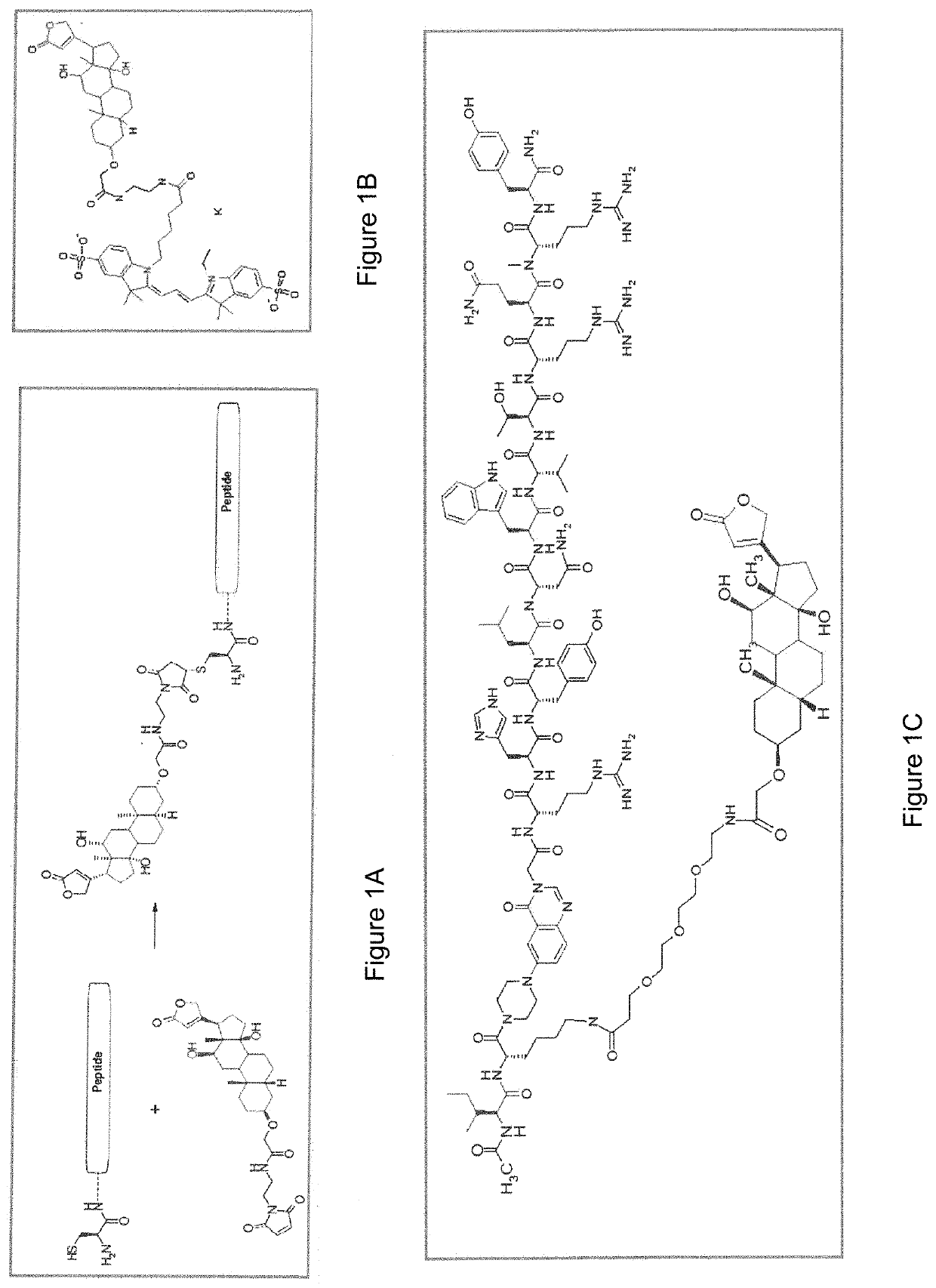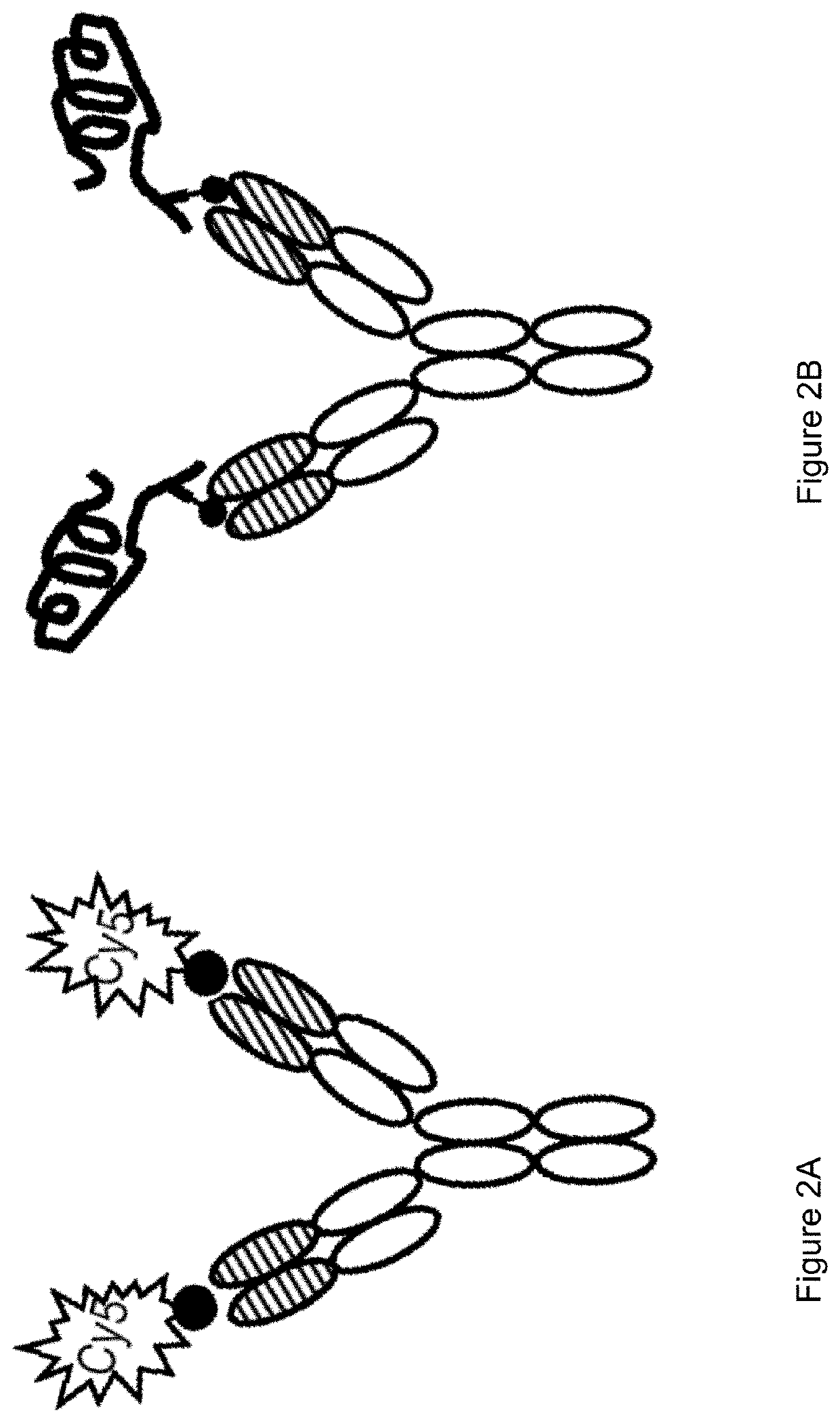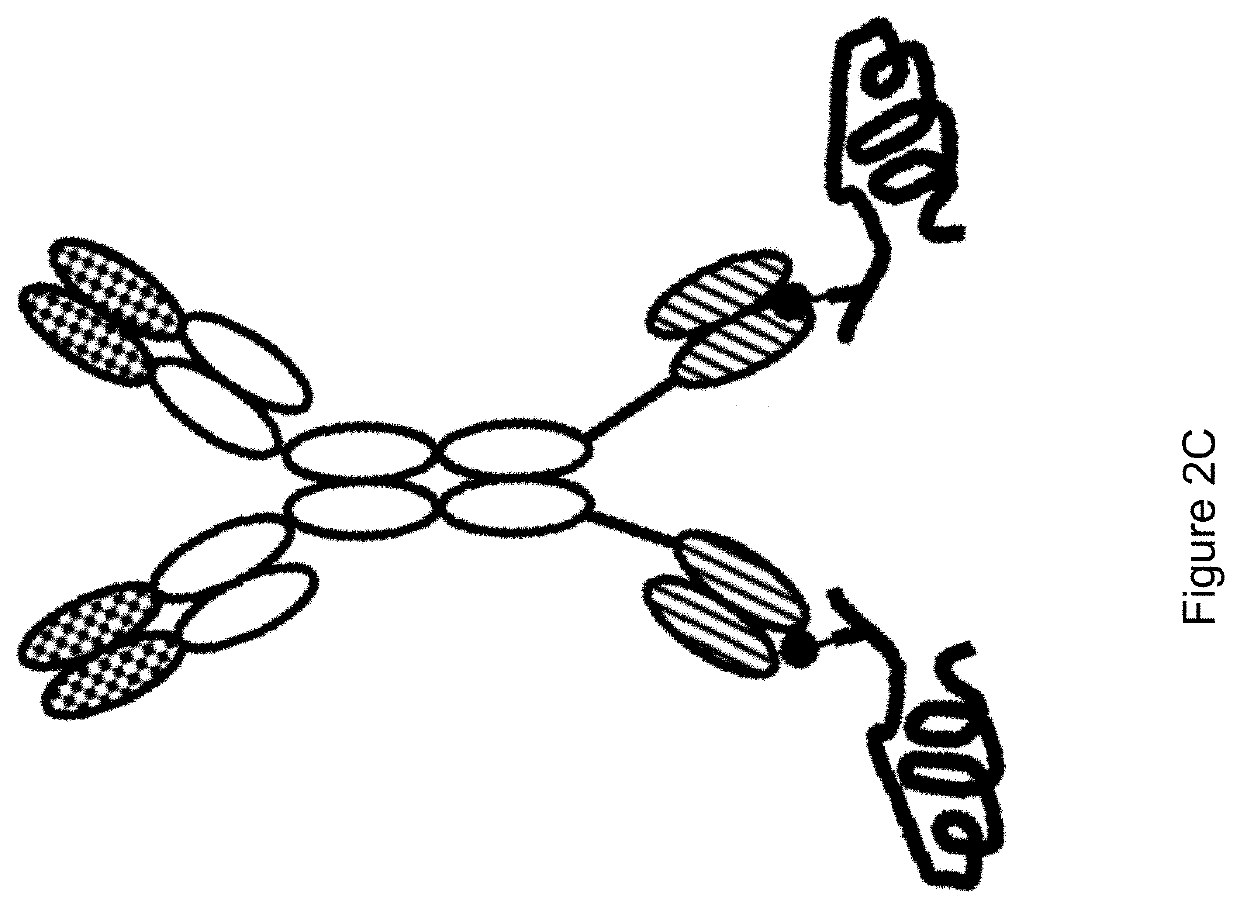Bispecific Anti-hapten/Anti-blood brain barrier receptor antibodies, complexes thereof and their use as blood brain barrier shuttles
a blood brain barrier and antibody technology, applied in the field of bispecific anti-hapten/anti-blood brain barrier receptor antibodies, can solve the problems of short serum half-life, limited solubility, short serum half-life, etc., and achieve the effect of increasing the activity of the payload, and increasing the stability of the payload
- Summary
- Abstract
- Description
- Claims
- Application Information
AI Technical Summary
Benefits of technology
Problems solved by technology
Method used
Image
Examples
example 1
[0837]Isolation and Characterization of cDNAs Encoding the VH and VL Domains of a Murine Anti-Digoxigenin Antibody and a Murine Anti-Biotin Antibody of IgG1 Class with Kappa Light Chain from Mouse Hybridoma
[0838]The isolation and characterization of cDNAs encoding the VH and VL domains of anti-digoxigenin antibodies, the RNA preparation, generation of DNA fragments, the cloning of the DNA fragments into plasmids and the determination of the DNA- and amino acid sequences were described in WO 2011 / 003557 and WO 2011 / 003780, respectively.
[0839]The protein and (DNA) sequence information of the VH and VL domains of the murine hapten-binding antibodies were obtained directly from hybridoma clones. The experimental steps performed subsequently were (i) the isolation of RNA from antibody producing hybridoma cells, (ii) conversion of this RNA into cDNA, the transfer into VH and VL harboring PCR fragments, and (iii) integration of these PCR fragments into plasmids vectors for propagation in E...
example 2
[0844]Isolation and Characterization of cDNAs Encoding the VH and VL Domains of a Murine Anti-Theophylline Antibody of IgG1 Class with Kappa Light Chain from Mouse Hybridoma The sequences of the anti-theophylline antibody were obtained as outlined in Example 1.
[0845]The murine VL sequence of the anti-theophylline antibody is depicted in SEQ ID NO: 72. The murine VH sequence of the anti-theophylline antibody is depicted in SEQ ID NO: 68.
example 3
Humanization of the VH and VL Domains of Murine Anti-Digoxigenin Antibody and Anti-Biotin Antibody
[0846]The generation of humanized variants of the digoxigenin-binding antibody has been described in detail in WO 2011 / 003557 and WO 2011 / 003780. The murine biotin-binding antibody muM33 was humanized in a similar manner as follows:
[0847]The generation and characterization of encoding sequences and amino acid sequences that comprise the VH and VL domains of a murine anti-biotin antibody of the IgG1 class with kappa light chain from mouse hybridoma are described in WO 2011 / 003557 and WO 2011 / 003780. Based on this information, a corresponding humanized anti-biotin antibody was generated (huM33) based on the human germline framework IGHV1-69-02 and IGKV1-27-01 combination. For VL, it was not necessary to integrate any backmutation in the framework of the human IGKV1-27-01 and the human J element of the IGKJ2-01 germline. The humanized VH is based on the human IGHV1-69-02 germline and the h...
PUM
| Property | Measurement | Unit |
|---|---|---|
| size | aaaaa | aaaaa |
| pore Size | aaaaa | aaaaa |
| hydrodynamic radius | aaaaa | aaaaa |
Abstract
Description
Claims
Application Information
 Login to View More
Login to View More - R&D
- Intellectual Property
- Life Sciences
- Materials
- Tech Scout
- Unparalleled Data Quality
- Higher Quality Content
- 60% Fewer Hallucinations
Browse by: Latest US Patents, China's latest patents, Technical Efficacy Thesaurus, Application Domain, Technology Topic, Popular Technical Reports.
© 2025 PatSnap. All rights reserved.Legal|Privacy policy|Modern Slavery Act Transparency Statement|Sitemap|About US| Contact US: help@patsnap.com



